Dear Reader, in this age of AI created content, please support with your goodwill someone who works harder to provide the human-made. Sign up at the top of the lefthand column or bottom of this page. You will receive my hand illustrated monthly newsletter RESTORE NATURE and access to the biodiversity garden design course as I write...and nothing else, I respect your time. I am also removing the advertizing as best I can as its become intrusive inappropriate and pays me nothing.
Regenerative gardening activity
8
How to make biochar
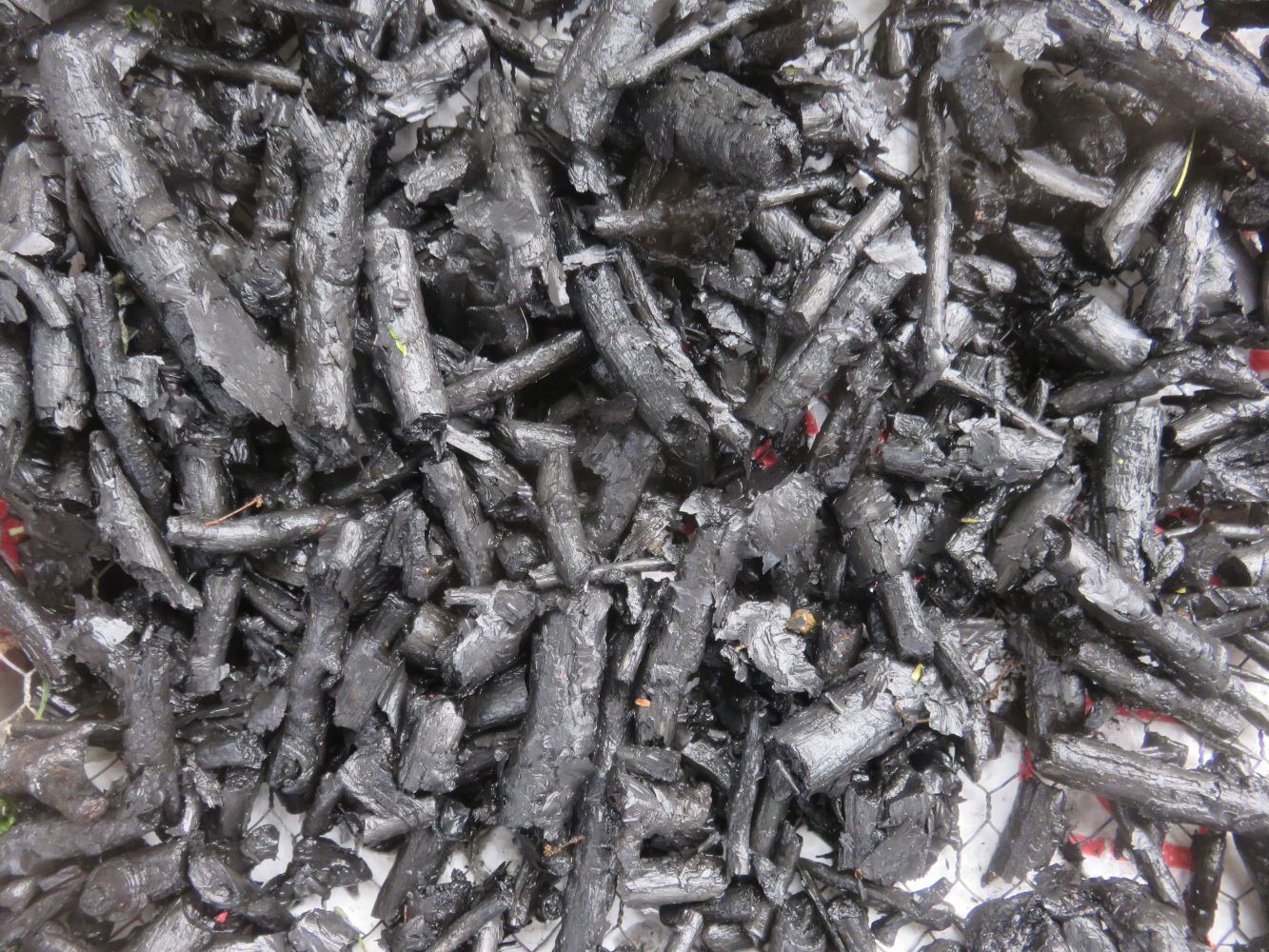
Oct 16, 2020.
8. How to make biochar
I first learned about biochar and the perennially fertile terra preta soils created with it in my permaculture design certificate course. I first learned how to make biochar at a Guerilla House workshop. Here is a link to my article on the fertility workshop which covers several amazing techniques they use for boosting soil life, including ferments. There I talk briefly about the structure of biochar that makes is such a fantastic soil additive.
In addition to boosting soil life, one of the important reasons biochar could be seen as regenerative is that it puts pure carbon in the soil for a long long time. Biochar does not decompose for hundreds of years.
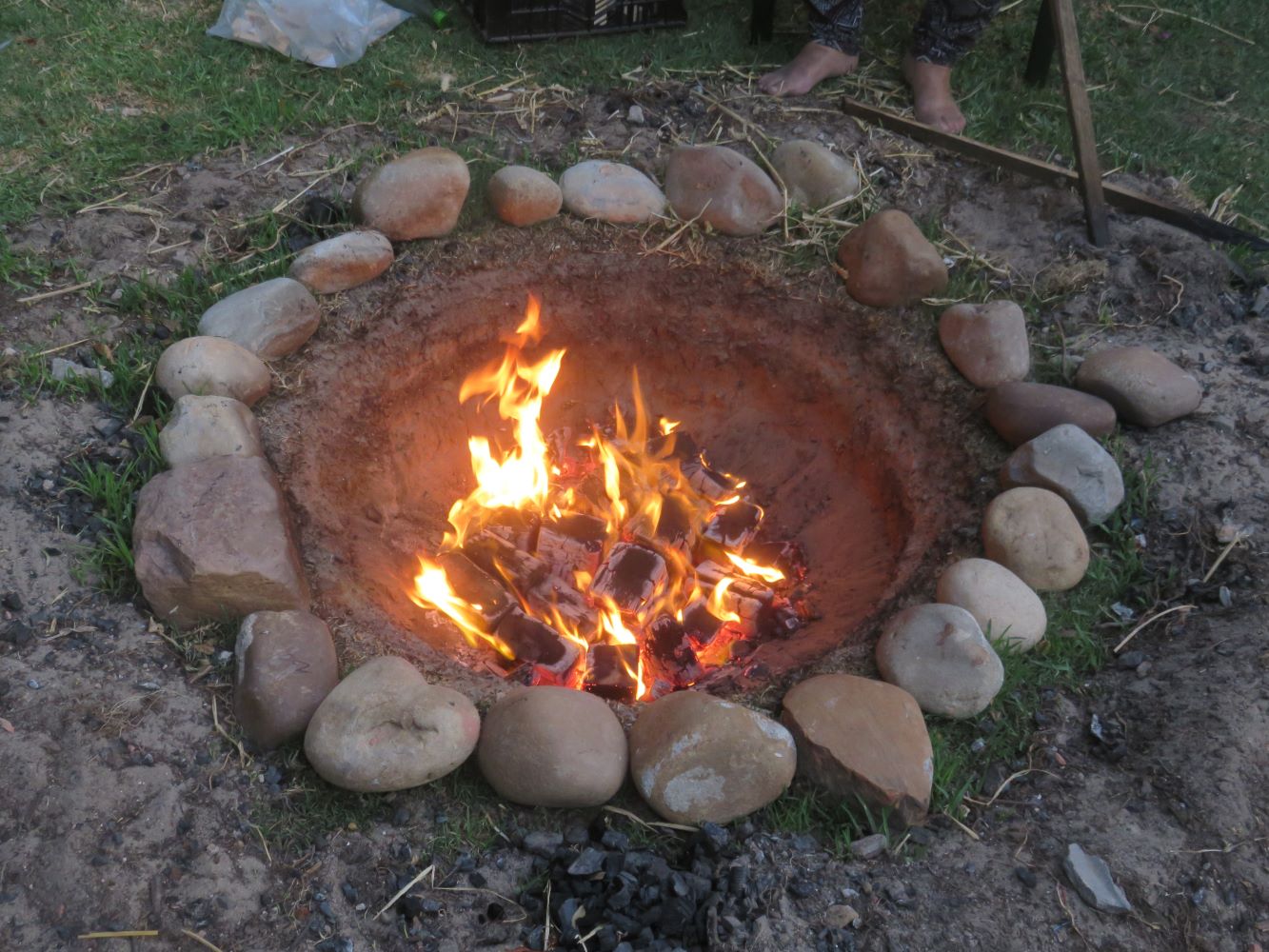 a conical biochar fire pit in the sand
a conical biochar fire pit in the sandI first had a hand in making biochar at a workshop run by Bernie Cohen James, the soil guru of the Cape Town northern suburbs. She dug a pit in the sand, and surrounded it with stones as you can see in the picture. Then a fire was started and flat wood (carpentry waste) was laid on the fire, a layer at a time. As each layer caught fire we added another layer on it, with the wood laid close, to cut off oxygen, without putting out the fire. Eventually about 50 cm of wood had been piled in the hole. If the wood does not burn to ashes, as it does when its well ventilated, but carbonizes, you have a lot of biochar. Bernie describes it as having a tinkling sound.
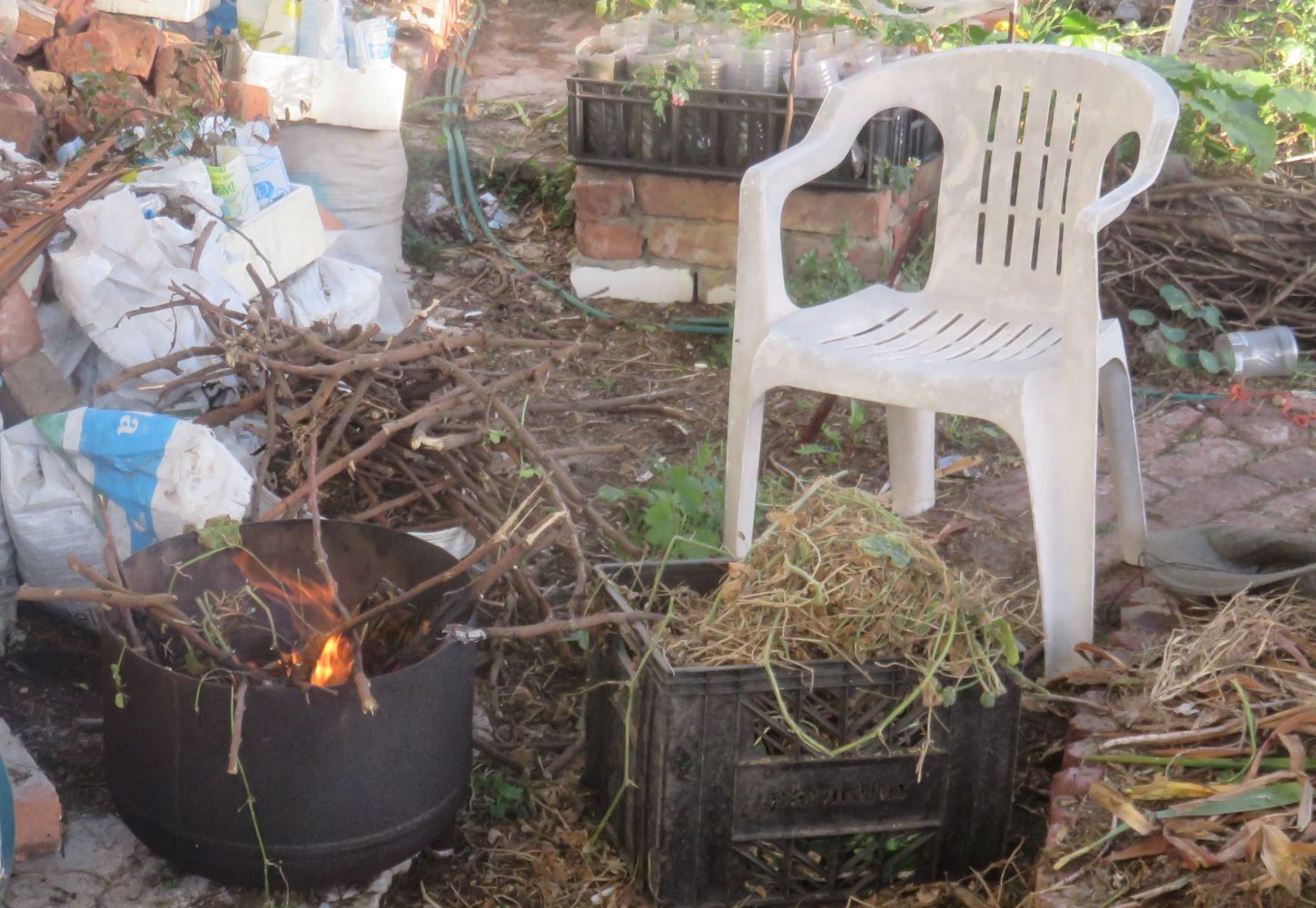 My own primitive biochar making setup
My own primitive biochar making setupThe very basics of how to make biochar
I finally made my own biochar using the technique I learned from Bernie. The container was an old metal drum. The wood was not straight but crooked thorn tree branches. What I did was bash the twigs as soon as they caught fire. The break into several pieces as they char. These then fall on the layer below and cover it. I had to add a stick or two at a time for hours, keeping up a fast pace of covering, till the drum was full. The fire is very very hot so when the drum was full I poured water and sand over it, and covered it with bricks. Perhaps I was overdoing it a little.
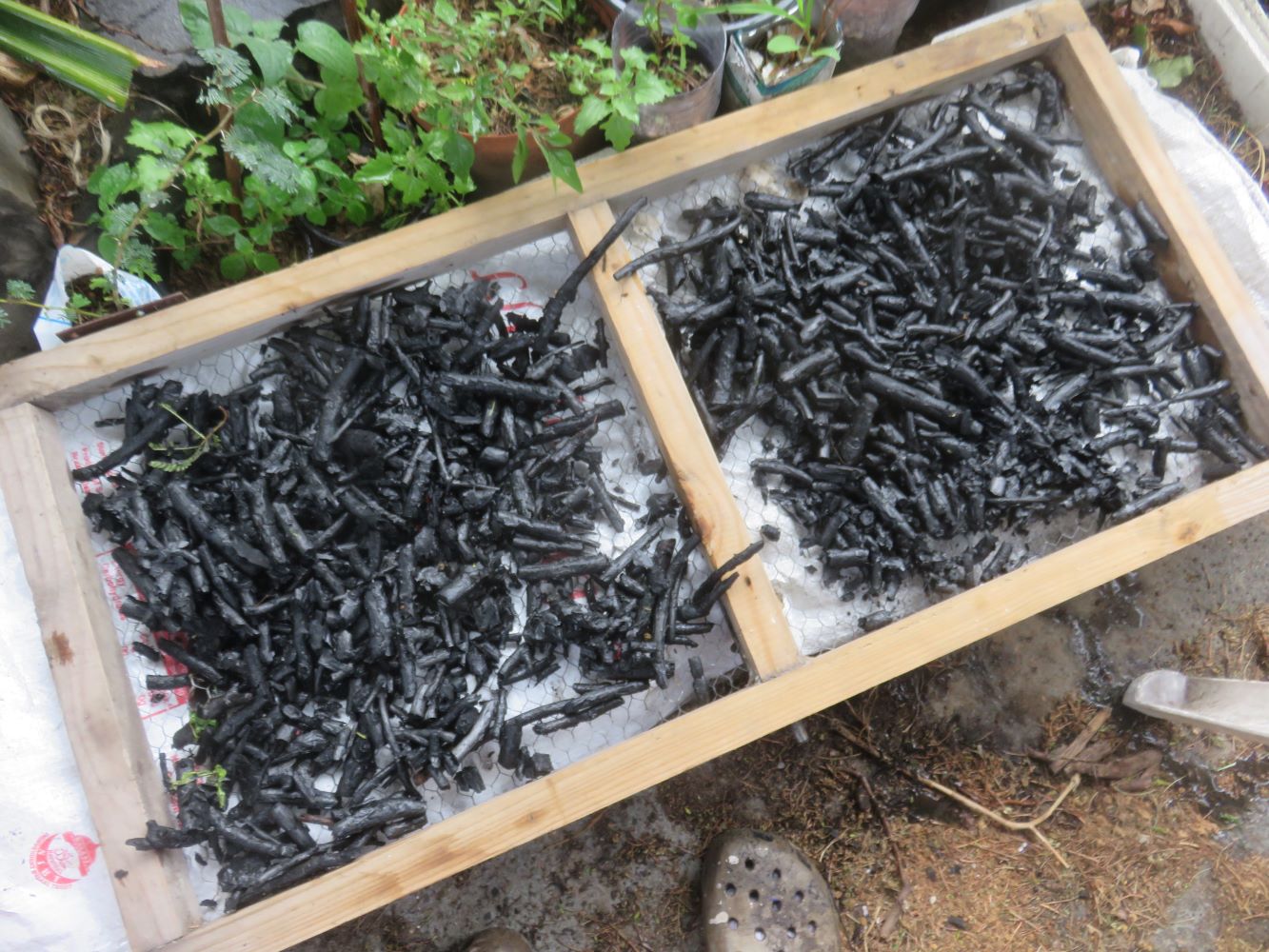 drying drying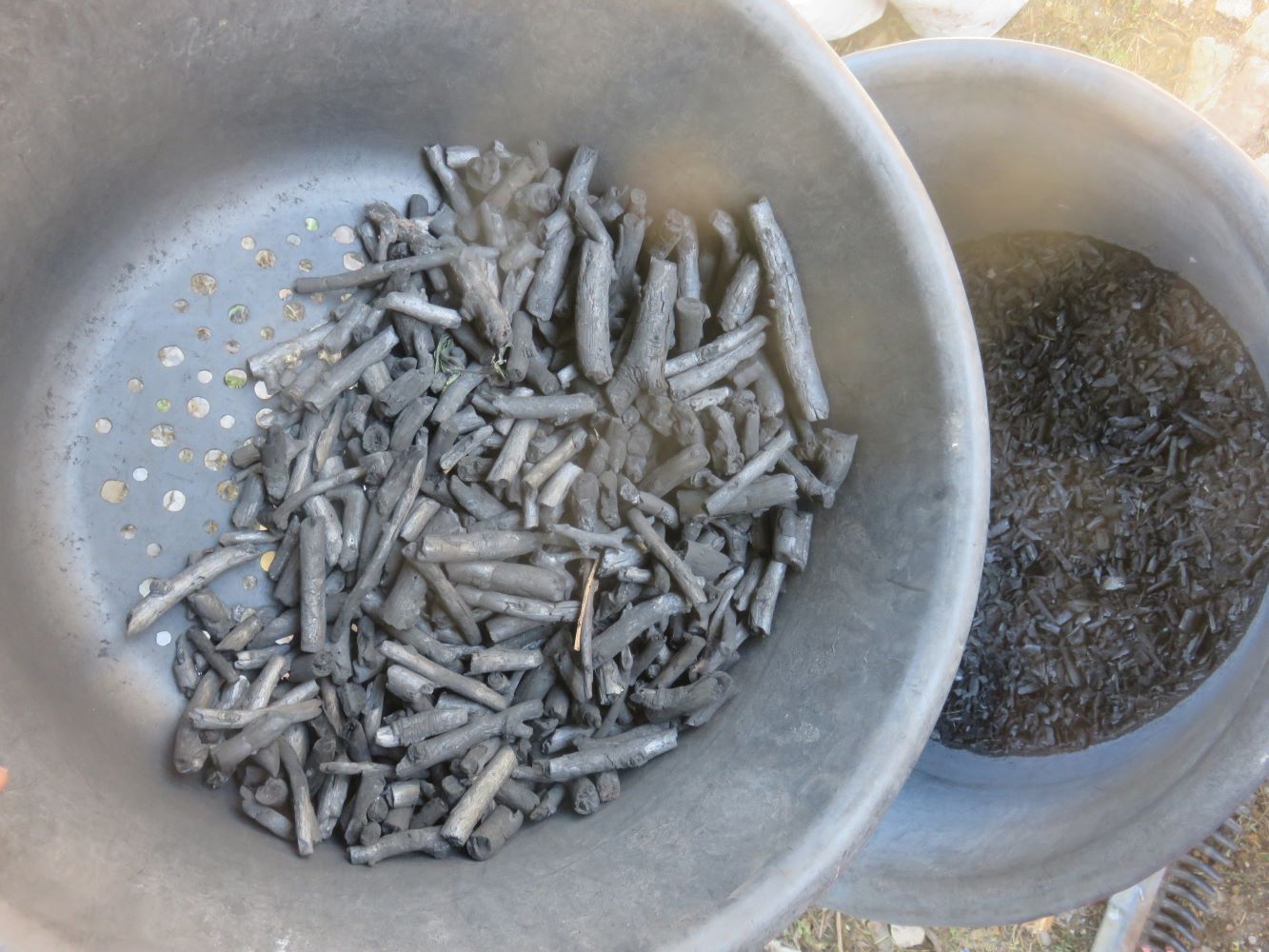 sifting sifting |
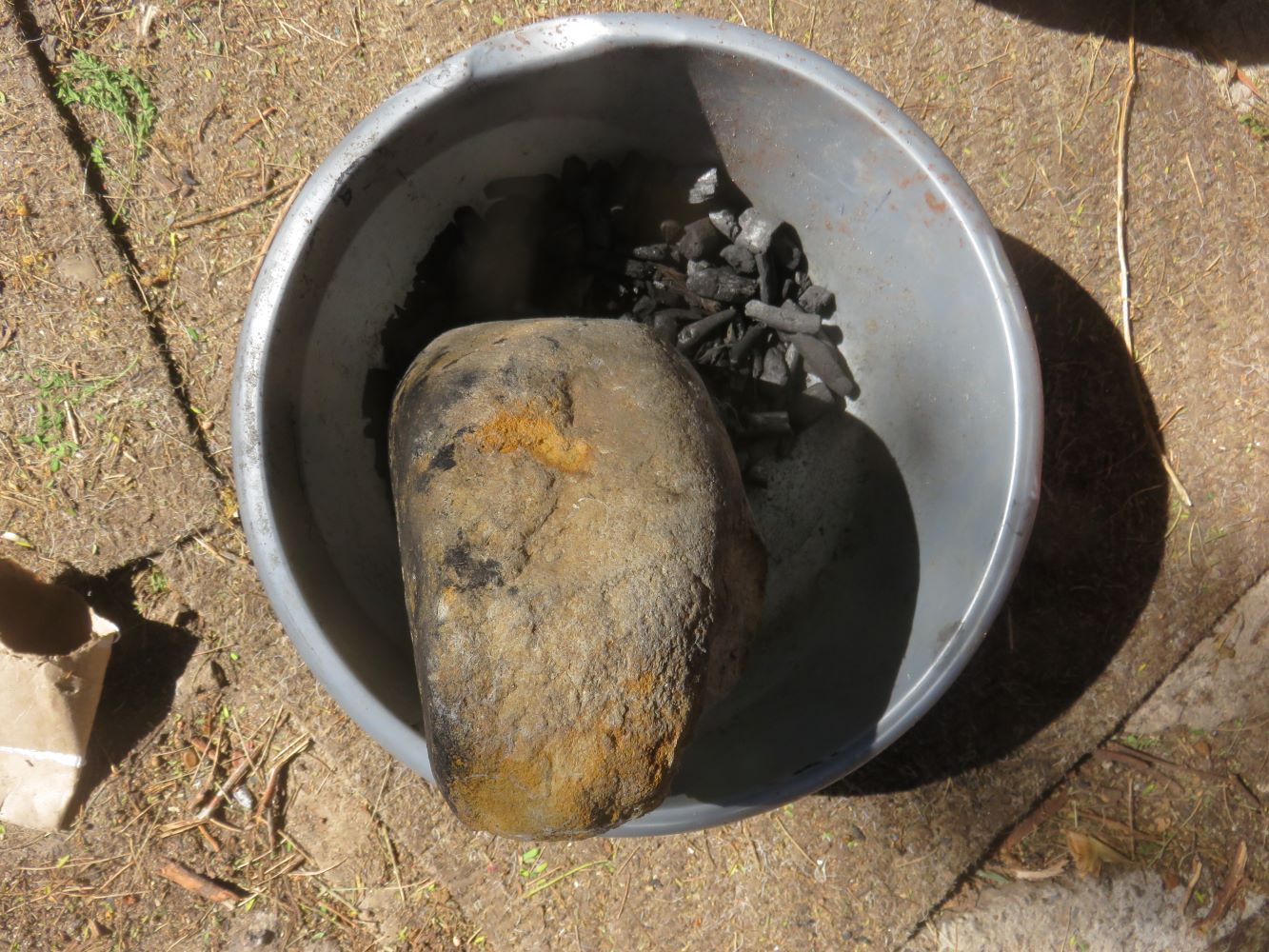 crushing crushing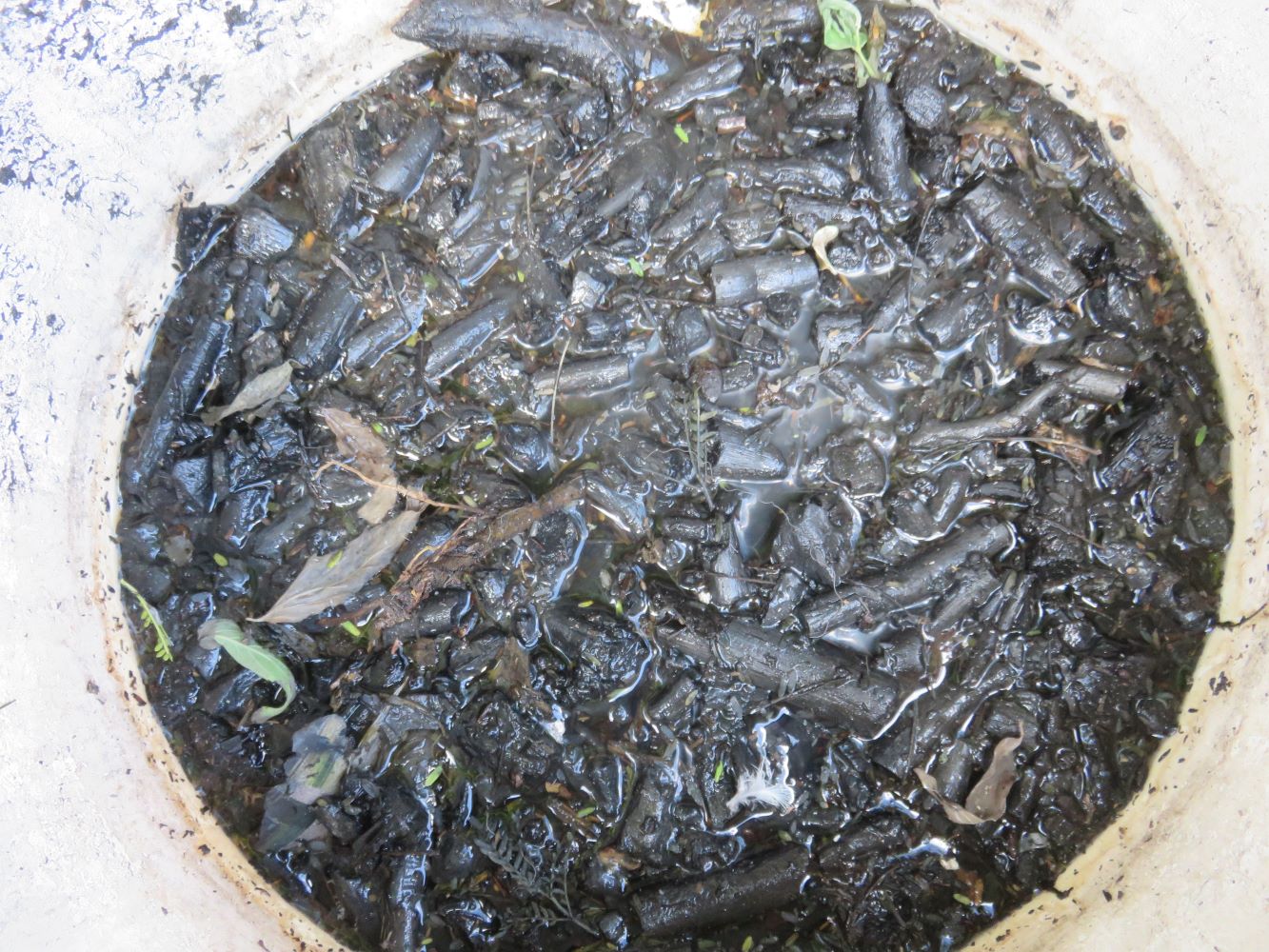 charging charging |
A few days later I started to process the char. There was a good bit of tinkly charcoal ! It would have been better if it wasn't wet, as it had to dry on a rack before I could crush it with a rock and sift it.
After
that I charged it. If you don't do this it will soak up all the
nutrients in the
soil, whereas once it is charged, it adds to the nutrient supply in the
soil. So one should immerse it in a biologically active substance. I had
an oversupply of fermented urine and that is where it soaked for
months. A hot or cold compost heap, or a liquid compost ferment would do just as well.
It was then ready to add to soil in various spots in the garden.
------
------
home page with links to all sorts of regenerative, permaculture and restorative gardening techniques
------
regenerative gardening activities series
Your first paragraph ...
Restore Nature Newsletter
I've been writing for four years now and I would love to hear from you
Please let me know if you have any questions, comments or stories to share on gardening, permaculture, regenerative agriculture, food forests, natural gardening, do nothing gardening, observations about pests and diseases, foraging, dealing with and using weeds constructively, composting and going offgrid.
SEARCH
Order the Kindle E-book for the SPECIAL PRICE of only
Prices valid till 30.09.2023
Recent Articles
-
garden for life is a blog about saving the earth one garden at a time
Apr 18, 25 01:18 PM
The garden for life blog has short articles on gardening for biodiversity with native plants and regenerating soil for climate amelioration and nutritious food -
Cape Flats Sand Fynbos, Cape Town's most endangered native vegetation!
Apr 18, 25 10:36 AM
Cape Flats Sand Fynbos, a vegetation type found in the super diverse Cape Fynbos region is threatened by Cape Town's urban development and invasive alien plants -
Geography Research Task
Jan 31, 25 11:37 PM
To whom it may concern My name is Tanyaradzwa Madziwa and I am a matric student at Springfield Convent School. As part of our geography syllabus for this
"How to start a profitable worm business on a shoestring budget
Order a printed copy from "Amazon" at the SPECIAL PRICE of only
or a digital version from the "Kindle" store at the SPECIAL PRICE of only
Prices valid till 30.09.2023







